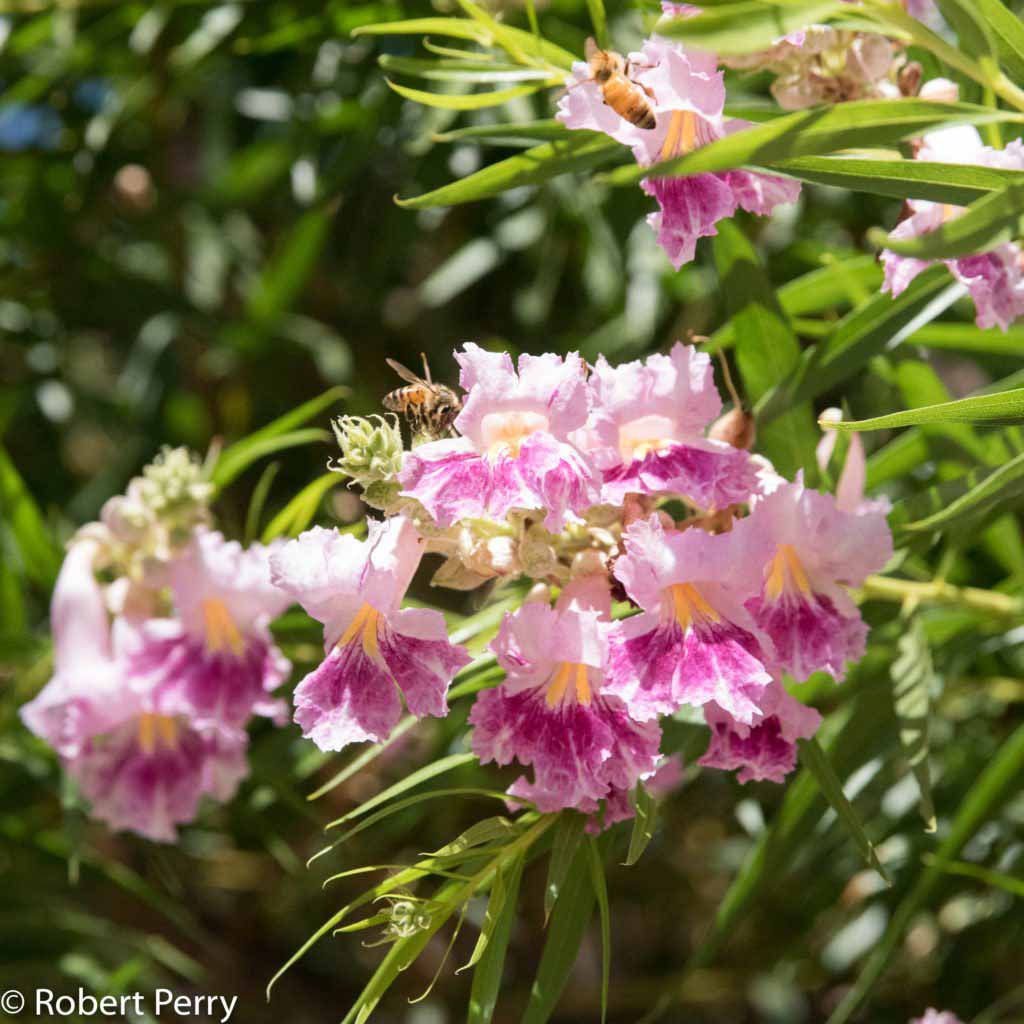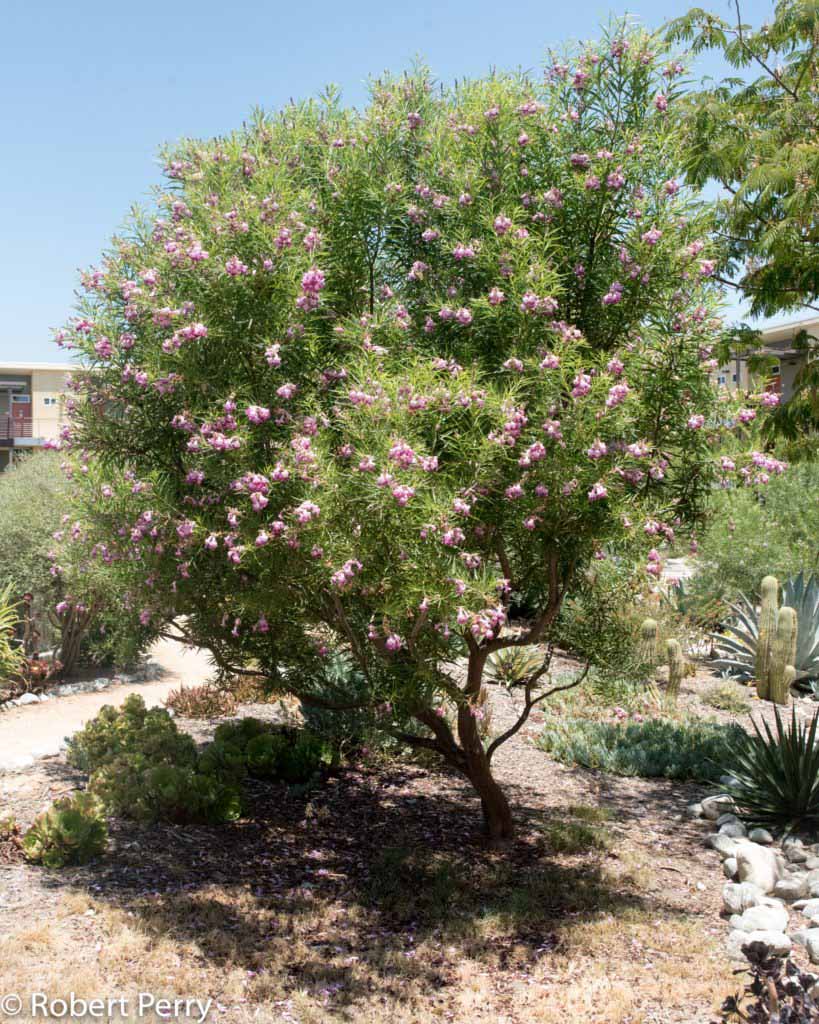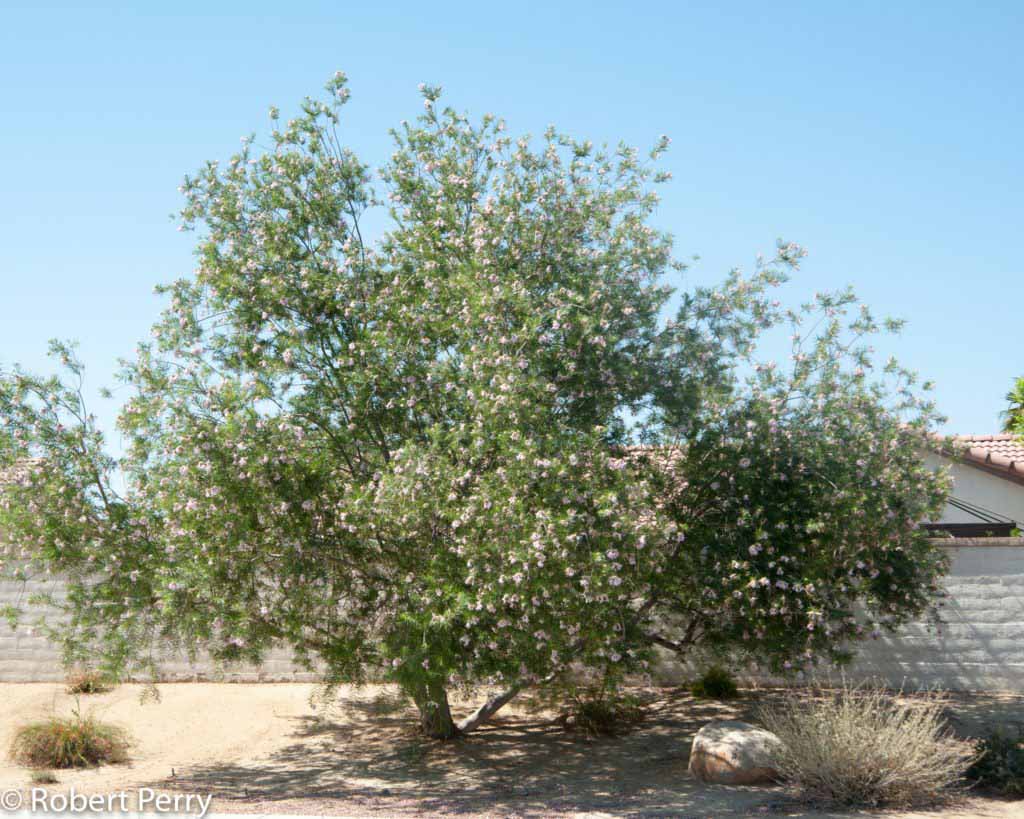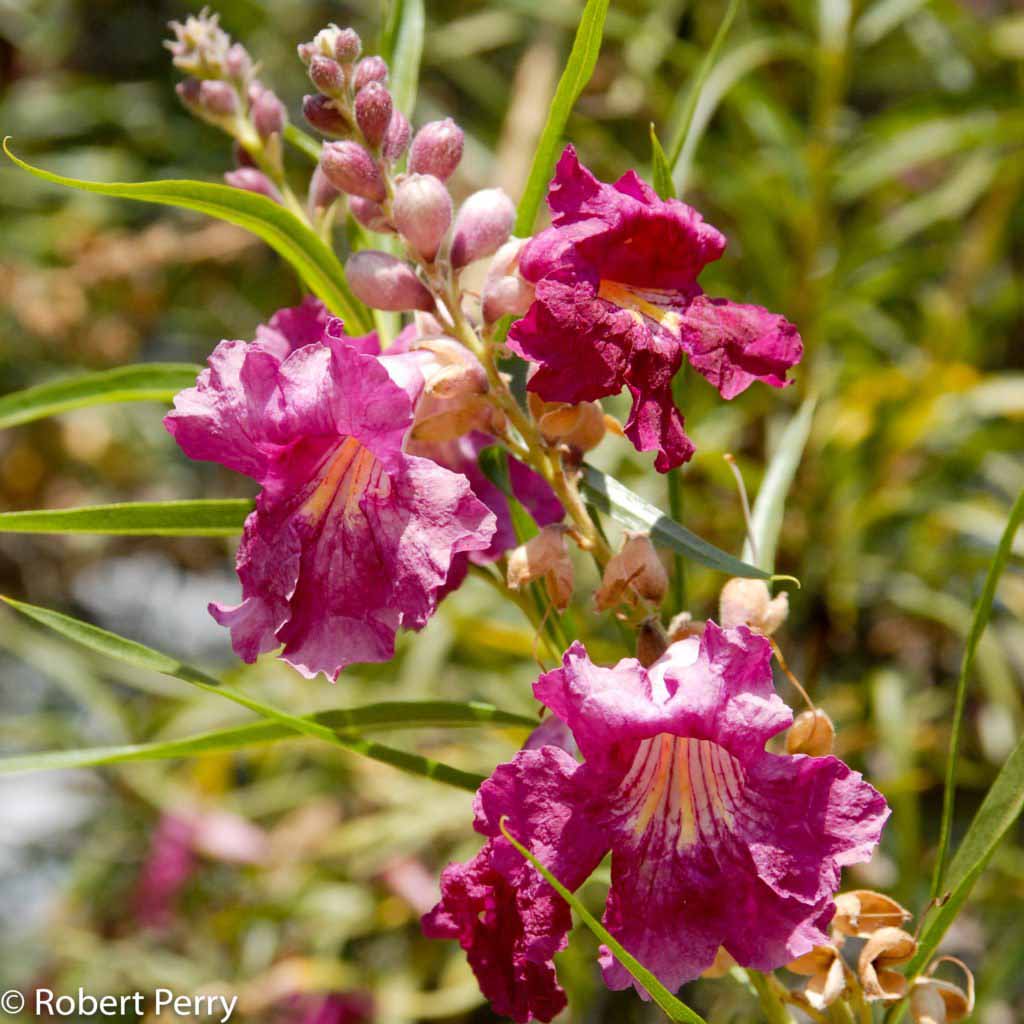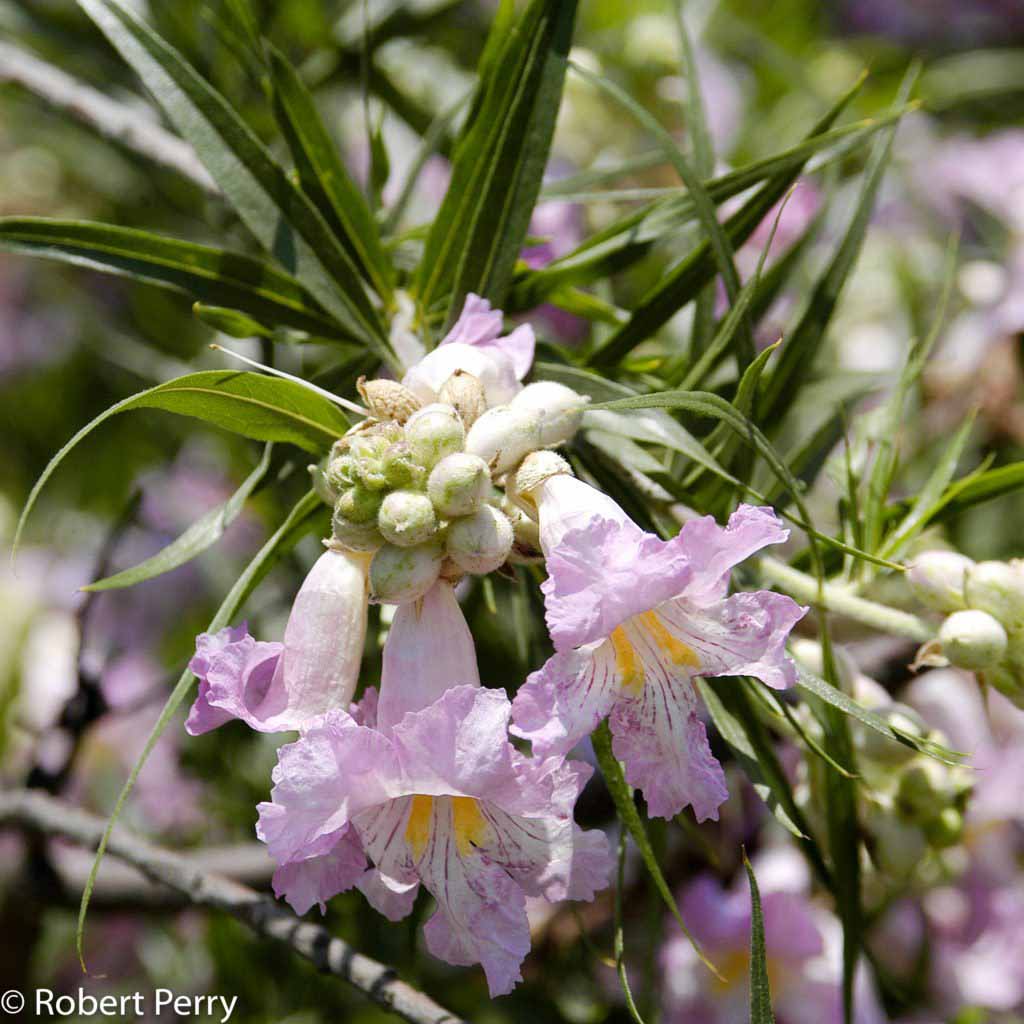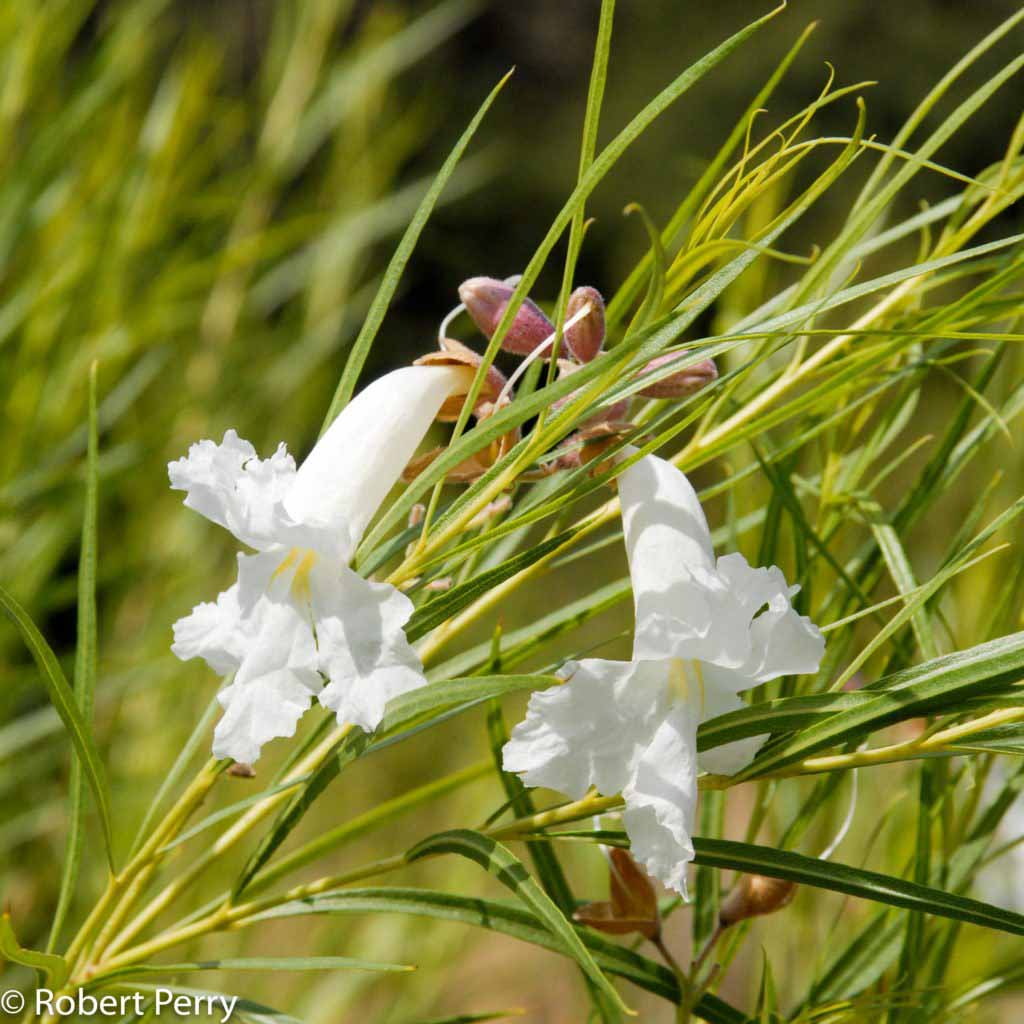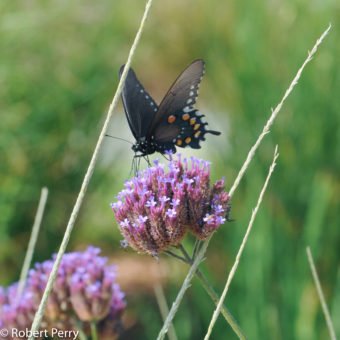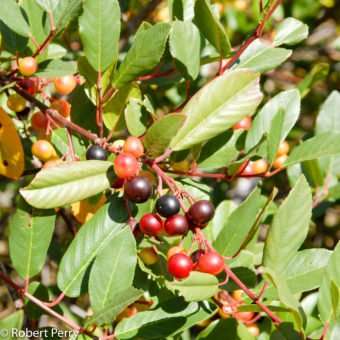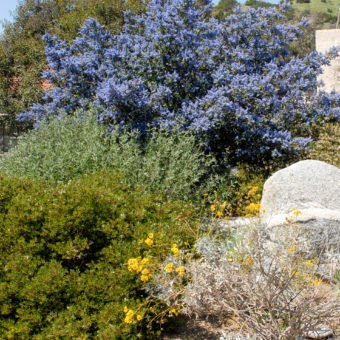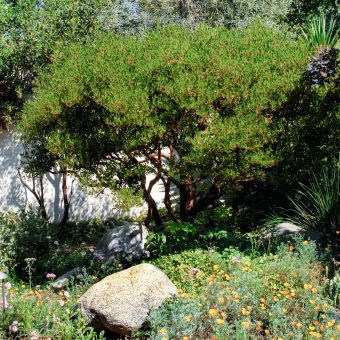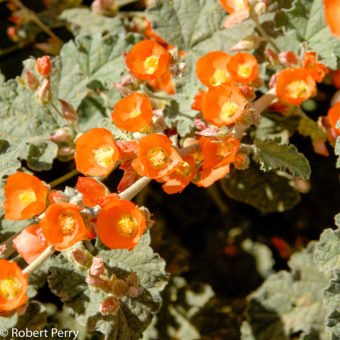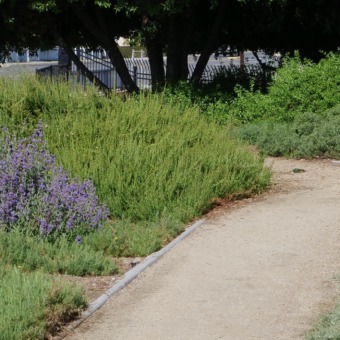The Desert willow grows into a large deciduous shrub to medium size tree with a low branching habit, usually from 15-20 ft. in height and spread. Rarely older individuals can be over 30 ft. tall. Long narrow linear leaves are 5 in. long and drop under moisture stress as well as during winter. Colorful trumpet-shaped flowers are white, pink or purple with purple and yellow throat markings. These flowers are fragrant and occur for several weeks from mid spring into summer. Some plants produce large numbers of long bean-type seed pods that persist on branches during winter.
Desert willow is native to high and low desert regions from Southern California to Texas and south into Mexico. It has proven to be a highly adaptable plant for use in Inland Empire gardens and landscapes, tolerating heat, cold, wind and summer drought. It has a graceful and open foliage habit that is useful for courtyard and southwestern style garden plantings. Young plants grow quickly and benefit from pruning to control form.
In recent years nurseries have introduced a number of new cultivars that offer a range of plant sizes, growth habits, flower colors and fewer seed pods. Some of the popular cultivars are: C. l. ‘Burgundy’ is a robust selection, 20-25 ft. tall with striking pale and dark purple flowers; C. l. ‘Warren Jones’ grows to 20 ft. in size, has an open branching habit and shaggy bark, and light pink flowers have ruffled edges; C. l. ‘White Storm’ is a small and delicate selection to 15 ft. tall that produces pure white flowers.
